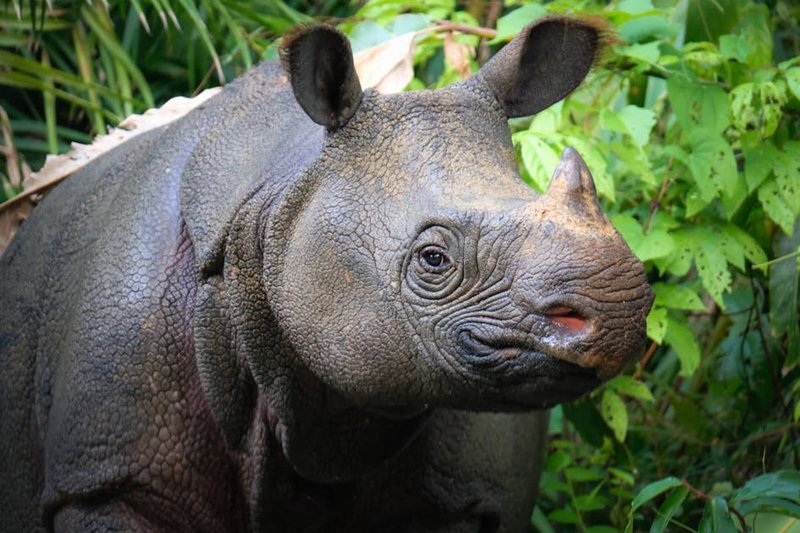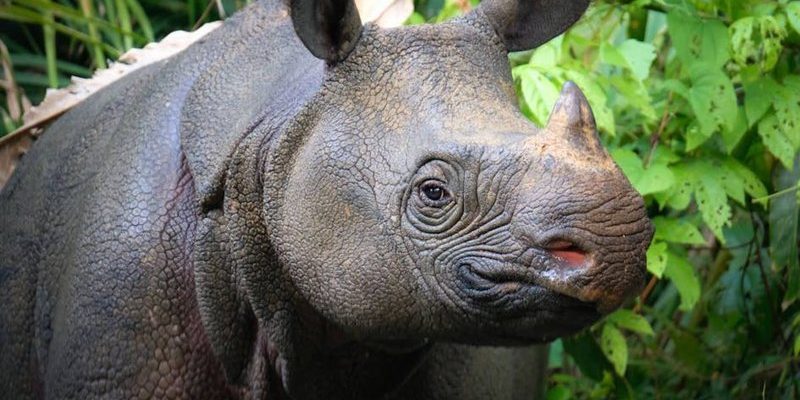
The Javan rhinoceros, or *Rhinoceros sondaicus*, is like the last chapter of a thrilling novel, one that we’re not sure will have a happy ending. With their numbers dwindling to just around 80 individuals left in their only remaining habitat, Ujung Kulon National Park in Indonesia, it’s hard not to feel a sense of urgency. So, what’s happening to this magnificent animal, and why should we care? Let’s unravel the threads of this critical issue together.
The Javan Rhinoceros: A Quick Overview
The Javan rhinoceros is one of the rarest large mammals on Earth, often overshadowed by its more famous cousins—the African and Indian rhinos. These creatures have distinct features, including a single horn and loose skin that folds over their large bodies, giving them a very unique appearance. Their habitat is primarily dense tropical forests, and they thrive in an environment rich in foliage for both food and shelter.
Sadly, human activity has played a significant role in bringing the Javan rhino to the brink of extinction. Deforestation, poaching, and habitat loss are constant threats. Honestly, it’s like watching a slow-motion train wreck; you see it coming, but you feel powerless to stop it. The challenge lies in both protecting their habitat and ensuring the safety of the remaining population.
Moreover, the Javan rhino’s reproductive rate doesn’t help its cause. With females only giving birth every few years, the population recovery is painfully slow. This means every individual counts, making conservation efforts all the more crucial.
Current Status of the Javan Rhinoceros
You might be wondering, “How many Javan rhinos are actually left?” As of now, experts estimate that there are only about 78 to 83 individuals remaining in the wild. This is a staggering drop from the thousands that once roamed the region. The critically low population puts them on the endangered species list, highlighting the urgent need for concerted conservation efforts.
The primary existing population is confined to Ujung Kulon National Park, a protected area that has become a sanctuary for these rhinos. However, this conservation area has its limitations, especially in terms of space and resources. It’s like keeping a rare plant in a small pot—while it can survive, it can never truly thrive. Conservationists are advocating for the expansion of the rhino’s habitat to include other areas.
Despite its endangered status, the Javan rhino has a unique resilience. Conservation efforts have made headway in the form of increased protection from poaching and habitat preservation. But the pressing question remains: is it enough to save this beautiful creature from the brink of extinction?
Threats to the Javan Rhinoceros
When talking about the Javan rhino, it’s essential to understand the range of threats it faces. One of the most significant risks comes from habitat destruction due to logging, agriculture, and human encroachment. As forests are cleared, these rhinos lose their homes, food sources, and safe areas to roam.
Another massive threat is poaching. Though the Javan rhino is not targeted as heavily as other rhino species for its horn, the shadows of illegal wildlife trade still loom large. Poachers often venture into protected areas, looking to capitalize on any opportunity, which jeopardizes the already fragile population.
On top of that, climate change poses a growing threat. Changes in rainfall patterns and temperature can affect food availability and habitat quality. Imagine trying to thrive in a home that’s slowly becoming unlivable; that’s the challenge these rhinos face every day.
Conservation Efforts and Success Stories
So, what’s being done to save the Javan rhino? Thankfully, organizations and governments are working tirelessly to protect this species. The Indonesian government, along with various non-profits, has implemented strict anti-poaching measures and improved habitat management practices within Ujung Kulon National Park.
One success story to highlight is the increased monitoring of the rhino population. Conservationists use camera traps and on-the-ground patrols to keep a closer watch on these animals. This proactive approach has helped ensure that any potential poaching incidents are dealt with swiftly.
Moreover, community involvement has been crucial. Local villages are being educated on the importance of preserving the Javan rhino and its habitat. By engaging the community, conservationists are fostering a sense of pride and responsibility towards these magnificent creatures. It’s an inspiring example of how a community can rally around a common cause.
How You Can Help the Javan Rhinoceros
You might be thinking, “What can I do to help?” Well, even if you’re far from Indonesia, you can still make a difference. Here are some meaningful ways to contribute:
- Donate: Contributing to wildlife conservation organizations can greatly assist their efforts in protecting the Javan rhino.
- Spread the Word: Share information about the Javan rhino on social media or in your community. Awareness is a powerful tool.
- Support Sustainable Products: Choosing products that are sustainably sourced helps combat habitat destruction by reducing demand for harmful practices.
- Get Involved: Join local conservation groups focused on wildlife protection or participate in fundraising events.
By taking these small steps, you can play a part in safeguarding the future of the Javan rhinoceros.
The Importance of Biodiversity and Ecosystems
Understanding the plight of the Javan rhinoceros also opens up a broader conversation about biodiversity. Every species, no matter how rare, plays a role in its ecosystem. Rhinos are known as “ecosystem engineers” because they help shape their environment by grazing and creating pathways through dense vegetation. This activity promotes the growth of other plant species and, in turn, supports various wildlife.
When we lose a species like the Javan rhino, we’re not just losing a single animal; we’re disrupting an entire ecosystem. This could lead to cascading effects that threaten other species and even human populations. It’s a chain reaction that illustrates why conservation isn’t just about saving one animal—it’s about preserving the intricate web of life on our planet.
The Future of the Javan Rhinoceros
As we look ahead, the future of the Javan rhinoceros remains uncertain. But there’s a glimmer of hope. With concerted efforts in conservation, community involvement, and education, we can create a future where these incredible creatures can thrive. It will take collaboration between governments, organizations, and individuals worldwide to ensure that they don’t become a memory of the past.
So, what’s our role in all of this? It’s simple—stay informed, advocate for wildlife, and embrace the idea that each of us can contribute to a healthier planet. The fate of the Javan rhinoceros is a reflection of our stewardship over the Earth. Let’s make sure our legacy is one of compassion and responsibility, ensuring that future generations can witness the beauty of this unique species in the wild.
In conclusion, the journey toward saving the Javan rhino is ongoing and far from easy. But with every small action and every voice raised in support, we can stand together to protect our planet’s treasures before it’s too late. Remember, every effort counts—because every rhino counts.

